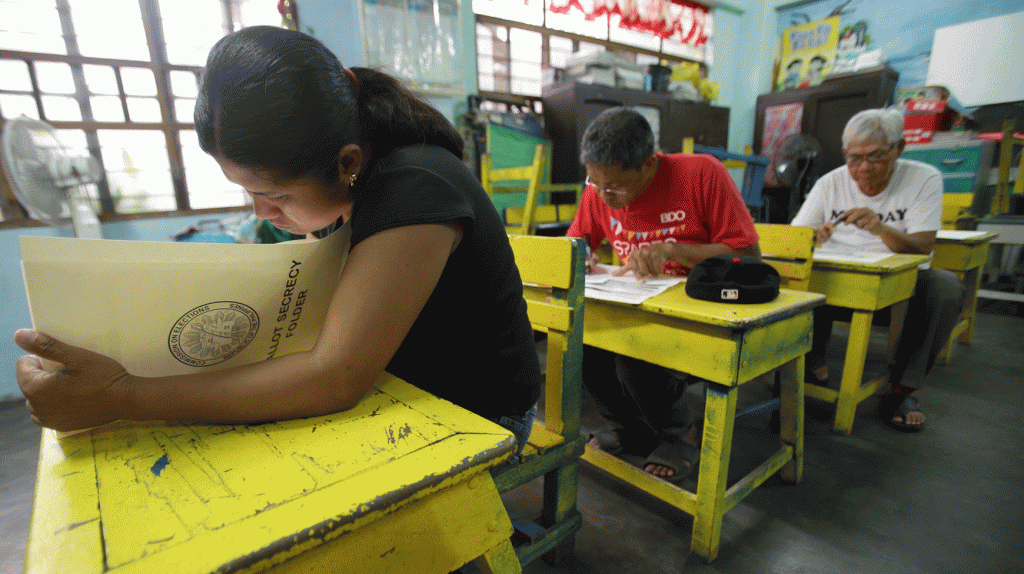By ATTY. Gregorio Larrazabal
….We started the discussion on what needs to be done in preparing for the May 2022, presidential elections. I covered two topics:
- Changing of the technology partner for the 2022 presidential elections.
- Conduct of an assessment of the May 13, 2019, midterm elections.
Below is the link to last week’s article for reference:
https://news.mb.com.ph/2019/07/01/reforming-elections-preparing-for-2022/
Today we discuss two more issues that have to be looked at, in preparing for the May, 2022, presidential elections:
- Bringing in of the private sector which include the citizens arm, political parties, media, and other stakeholders.
As in previous elections, the participation of the citizens arm and other stakeholders, including the media, is essential in order to achieve good elections. Among the key aspects in the preparations for an electoral exercise, three key points come to mind:
a. Voter Education
Generally, there is a 5-10% increase in the number of registered voters between general elections (in some areas, the increase of new registered voters is even higher). So that means that, for the 2022 presidential elections, there will be around 5 million new registered voters — people who’ve never experienced voting in an automated election. Although we’ve had four automated elections already, we should never assume they know the process, which starts from registration. The private sector must be enabled to be strong partners in the process, because experience has taught me that the private sector can be very effective in educating the electorate. Equally important though as educating the electorate is the fact that there must be one message and consistency in the messaging. In some electoral exercises, the effectivity in disseminating information is achieved when there is only one voice. Meaning, instructions as to the process, answers to FAQs, etc., must be uniform. There will be minimal confusion once everyone says the same thing. Consistency is key. It would be difficult if different people are saying different things, as it could lead to voters being confused. But it should also be a two-way street. Comelec must also confer with the stakeholders to help the Commission. The input of the private sector could also help Comelec adjust its focus to address some concerns, which may need more attention.
b. Assistance in monitoring the preparations of the elections
Comelec can bring in the stakeholders to assist the commission in the various stages in the preparations. This can start with the bidding process where the stakeholders can help streamline the process and provide more openness. But that is just the start. More involvement of the private sector in monitoring the process and assistance in informing the public is essential, specially in laymanizing the technological aspect of the preparations. By making the public aware of the process and having them understand the intricacies, it builds confidence not only in the process but in also the results of the electoral exercise.
c. Audit of the system, including the RMA
One of the most talked-about aspects in the audit of an AES is the conduct of the source code review. Which is the verification/audit of the software which will be used in the AES. The software is used in the machines for the AES. These includes the counting machine (PCOS/VCM), the canvassing and consolidating system (CCS), etc.. Having just concluded the 4th automated elections, it’s very good that there has been much more involvement of some stakeholders in the source code review of the AES. I hope this continues and increases in future elections. But there has to be involvement in the other aspects as well. Many of the technical aspects of the preparations might not be as sexy, but these are crucial nonetheless. I am also hopeful that the citizen’s arm continues to involve itself in the conduct of the Random Manual Audit (RMA). I do hope Comelec increases the number of clustered precincts that will be audited, to 10 clustered precincts per legislative district.
In the election cycle, every election is important, but presidential election more crucial. There should be more involvement of the various stakeholders throughout the process of preparing for the next election.
- Strengthening of the mechanisms within Comelec.
I posted on social media earlier this month that July is looking to be an interesting month, and one of the interesting things that will happen in July is the AES (Automated Election System) Technology Fair which will be hosted by the Department of Information & Communication Technology on July 15, 2019, at the DICT office in Quezon City.

